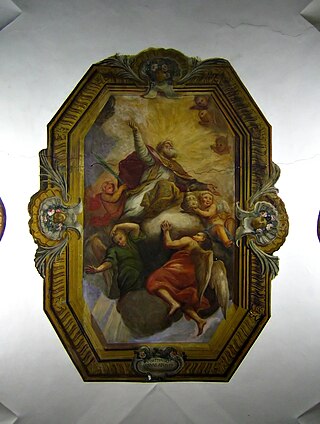
Pope Marcellus I was the bishop of Rome from May or June 308 to his death. He succeeded Marcellinus after a considerable interval. Under Maxentius, he was banished from Rome in 309, on account of the tumult caused by the severity of the penances he had imposed on Christians who had lapsed under the recent persecution. He died the same year, being succeeded by Eusebius. His relics are under the altar of San Marcello al Corso in Rome. Since 1969 his feast day, traditionally kept on 16 January by the Catholic Church, is left to local calendars and is no longer inscribed in the General Roman Calendar.

The Catacombs of Rome are ancient catacombs, underground burial places in and around Rome, of which there are at least forty, some rediscovered only in recent decades.

Agathaof Sicily is a Christian saint. Her feast is on 5 February. Agatha was born in Catania, part of the Roman Province of Sicily, and was martyred c. 251. She is one of several virgin martyrs who are commemorated by name in the Canon of the Mass.
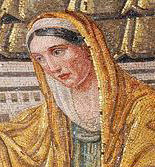
Pudentiana is a traditional Christian saint and martyress of the 2nd century who refused to worship the Roman Emperors Marcus Aurelius and Antoninus Pius as deities. She is sometimes locally known as Potentiana and is often coupled with her sister, Praxedes the martyr.
Cyriacus, sometimes Anglicized as Cyriac, according to Christian tradition, is a Christian martyr who was killed in the Diocletianic Persecution. He is one of twenty-seven saints, most of them martyrs, who bear this name, of whom only seven are honoured by a specific mention of their names in the Roman Martyrology.

Saint Anastasia is a Christian saint and martyr who died at Sirmium in the Roman province of Pannonia Secunda. In the Eastern Orthodox Church, she is venerated as St. Anastasia the Pharmakolytria, i.e. "Deliverer from Potions". This epithet is also translated as "One who Cures (Wounds)" in Lampe's A Patristic Greek Lexicon.
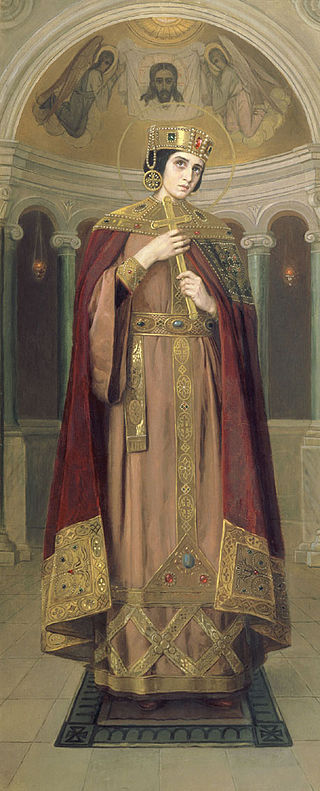
Alexandra of Rome was a reputed Christian martyr and saint, known from Martyrdom of Saint George as either Emperor Diocletian's wife or the wife of Dacian, a Roman Prefect. She is also sometimes mistaken with Priscilla or Prisca.
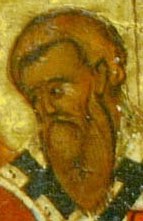
Pudens was an early Christian saint and martyr.
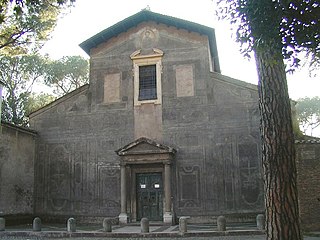
Santi Nereo ed Achilleo is a fourth-century basilica church in Rome, Italy, located in via delle Terme di Caracalla in the rione Celio facing the main entrance to the Baths of Caracalla. It has been the titular church of Cardinal Celestino Aós Braco since 28 November 2020.
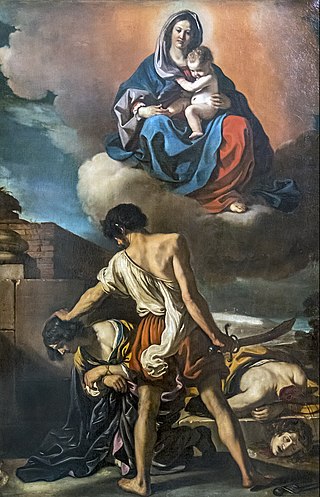
John and Paul are saints who lived during the fourth century in the Roman Empire. They were martyred at Rome on 26 June. The year of their martyrdom is uncertain according to their Acts; it occurred under Julian the Apostate (361–363).

Saints Protus and Hyacinth were Christian martyrs during the persecution of Emperor Valerian. Protus' name is sometimes spelled Protatius, Proteus, Prothus, Prote, and Proto. His name was corrupted in England as Saint Pratt. Hyacinth is sometimes called by his Latin name Hyacinthus.
Nicomedes was a martyr of unknown era, whose feast is observed 15 September. He was buried in a catacomb on the Via Nomentana near the gate of that name.

Saint Praxedes, called "a Roman maiden", was a saint and virgin who lived in the Roman Empire during the 2nd century. Along with her sister, Saint Pudentiana, she provided for the poor and gave care and comfort to persecuted Christians and martyrs. Her veneration began in the 4th century and many churches have been dedicated to her.
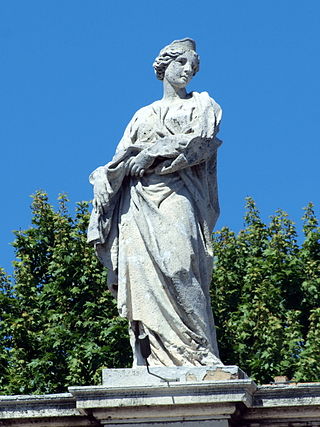
Balbina of Rome, sometimes called Saint Balbina and Balbina the Virgin is venerated as a virgin martyr and saint of the Catholic Church.

Felicitas of Rome, also anglicized as Felicity, is a saint numbered among the Christian martyrs. Apart from her name, the only thing known for certain about this martyr is that she was buried in the Cemetery of Maximus, on the Via Salaria on a 23 November. However, a legend presents her as the mother of the seven martyrs whose feast is celebrated on 10 July. The Eastern Orthodox Church celebrates their martyrdom on 25 January.

Saint Sabina was a saint and martyr of the early church. Her feast day is 29 August. She lived and suffered martyrdom at the beginning of the 2nd century in Rome.

The Catacomb of Priscilla is an archaeological site on the Via Salaria in Rome, Italy, situated in what was a quarry in Roman times. This quarry was used for Christian burials from the late 2nd century through the 4th century. This catacomb, according to tradition, is named after the wife of the Consul Manius Acilius Glabrio; he is said to have become a Christian and was killed on the orders of Domitian. Some of the walls and ceilings display fine decorations illustrating Biblical scenes.
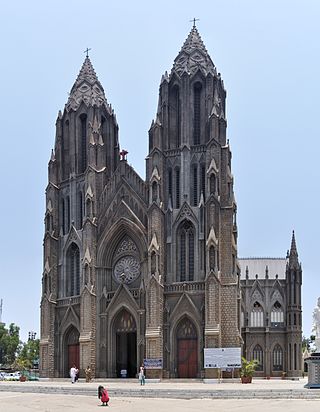
St. Philomena's Cathedral is a Catholic church that is the cathedral of the Diocese of Mysore, India. The full name is the Cathedral of St. Joseph and St. Philomena. It is also known as St. Joseph's Cathedral. It was constructed in 1936 using a Neo Gothic style and its architecture was inspired by the Cologne Cathedral in Germany. This is one of the tallest churches in Asia.

The Catacomb of Saint Thecla is a Christian catacomb in the city of Rome, near the Via Ostiense and the Basilica of Saint Paul Outside the Walls, in the southern quarter of the ancient city. The catacomb was constructed in the fourth century of the Common Era, linked with a basilica to the saint that is alluded to in literature. Because of the enigmatic endings of the legends of Saint Thecla of Iconium, it is still unknown whether the tomb belongs to the saint or if it belongs to a different noblewoman. Regardless, the tomb is an example of early Christian funerary practice and artwork. The most recent discovery in the catacomb was the depiction of several apostles, hypothesized to be their earliest portrayals. Of particular interest to many is the portrait of the Apostle Paul.

Marthae Marchinae Virginis Neapolitanae Musa Posthuma was first published in 1662, sixteen years after Martha Marchina's death. The book contains a collection of Latin poems, including epigrams and odes, as well as letters written by Marchina who was an Early Modern Italian poet whose family made and sold soap. The poetry included in this volume were from the private collection of Virgilio Spada, the brother of Cardinal Bernardino Spada, who had been Martha Marchina's benefactor.



















